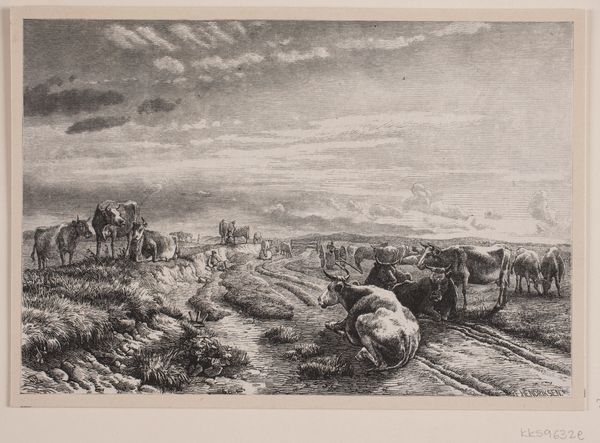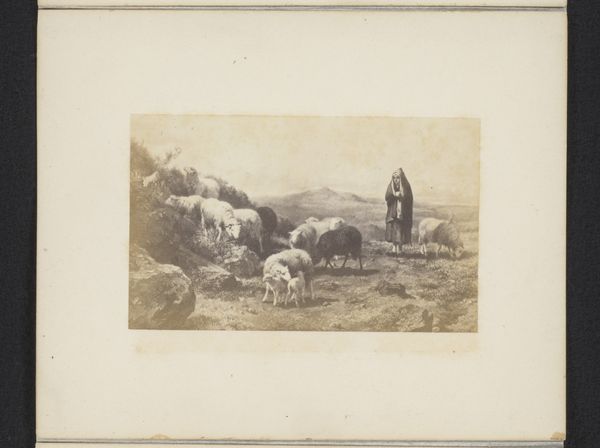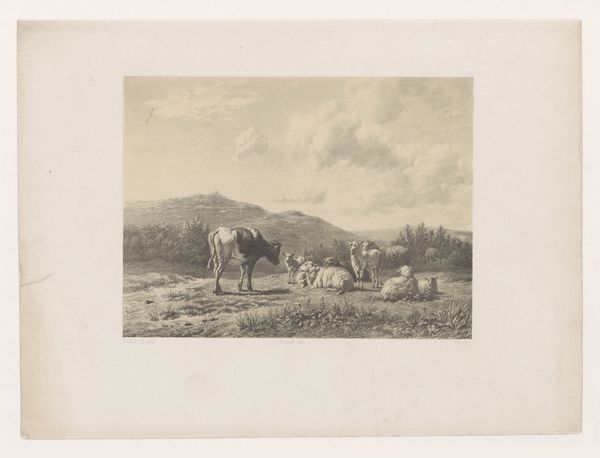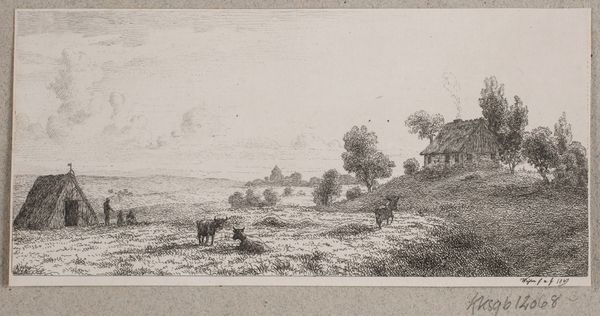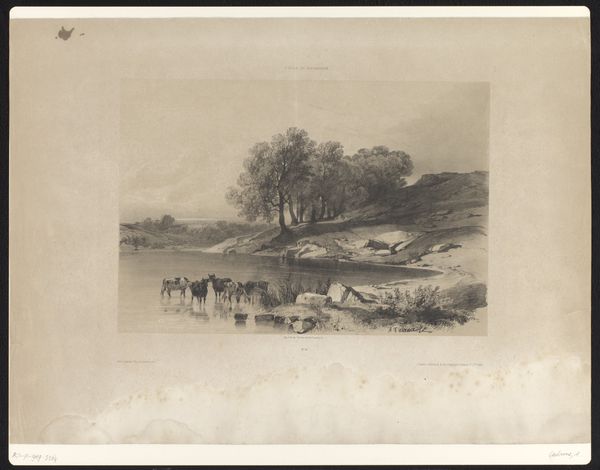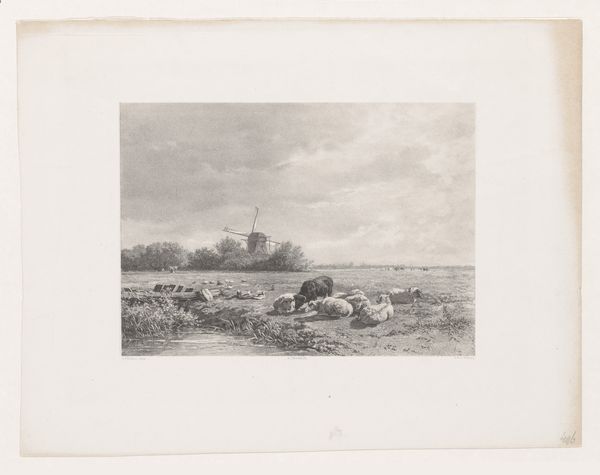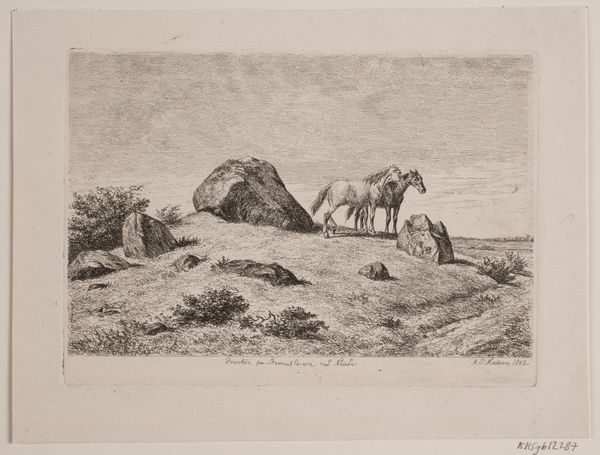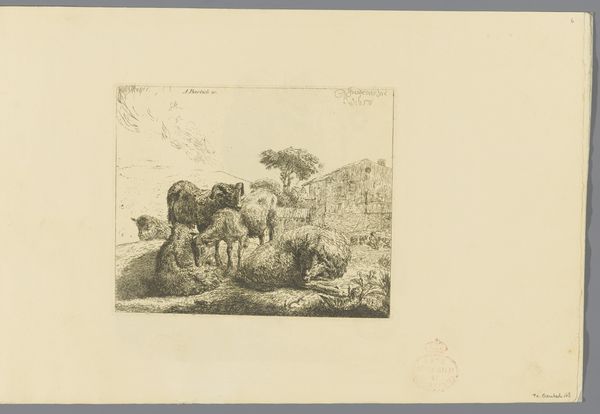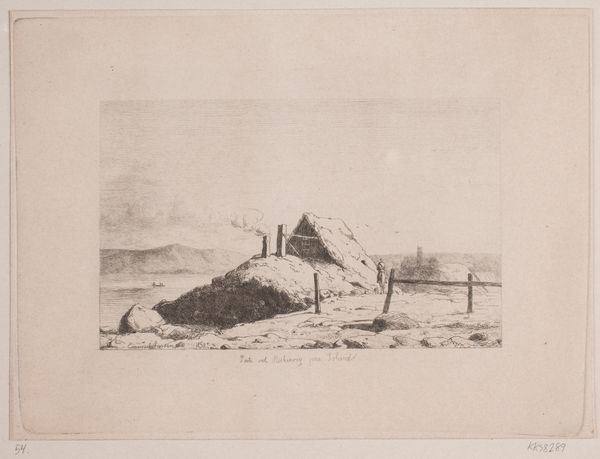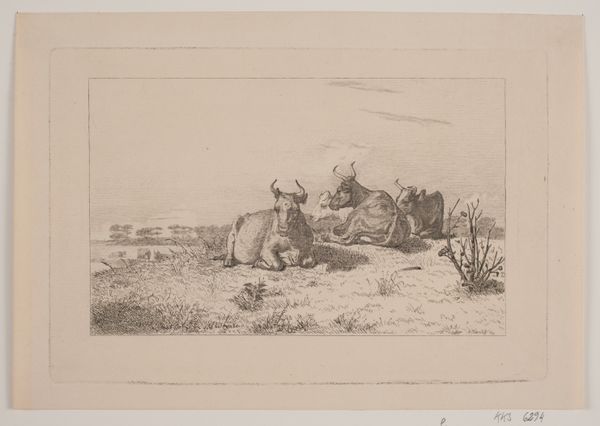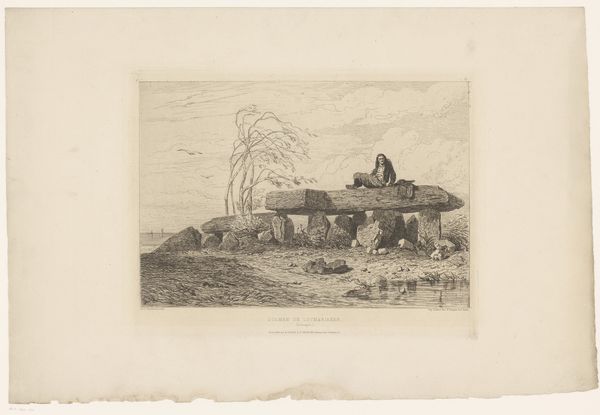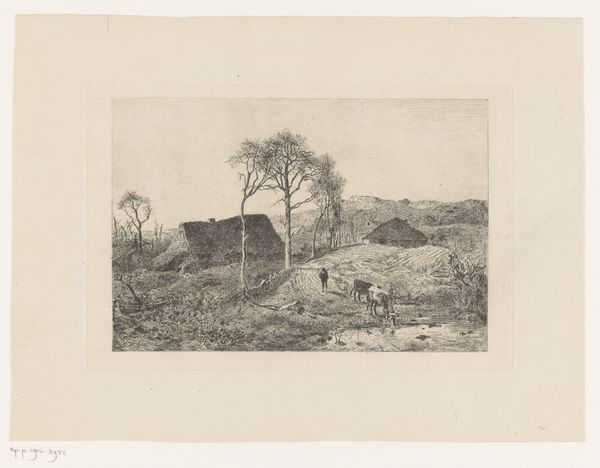
drawing, print, etching
#
drawing
# print
#
etching
#
landscape
#
orientalism
#
realism
Dimensions: Image: 7 7/16 × 11 3/4 in. (18.9 × 29.8 cm) Sheet: 11 7/8 × 17 1/8 in. (30.2 × 43.5 cm)
Copyright: Public Domain
Editor: This is "Fontaine aux environs de Tunis" -- or "Fountain near Tunis"--an etching by Jules Didier from sometime between 1850 and 1914. I’m struck by its depiction of everyday life; it’s calm and seemingly unbothered. What do you see in this piece? Curator: I am immediately drawn to the fountain itself, that central structure. Do you notice the dome-like form? Such forms frequently signify sacred or communal spaces. This could be more than just a water source; it's potentially a place of gathering, of ritual purification, even spiritual contemplation. Consider how water holds symbolic weight across cultures – cleansing, rebirth, the very essence of life. Editor: That's interesting. I was mostly focused on the realism of the people and animals, not so much on the fountain’s possible symbolic weight. Curator: Look closely at the figures positioned around the fountain. The man leaning casually, the other with the horse… Didier positions them in relationship to the water source, suggesting their dependence but also their dominion. Does this create any feeling about the role of men within this cultural and historical context? Editor: It hints at a certain balance of power, perhaps? Man's relationship with nature, controlling and yet reliant. Curator: Precisely! Didier has layered those relations within a cultural narrative. The symbols invite us to question the representation itself, its biases and cultural lens. Editor: It's fascinating how something that seems like just a simple scene can hold so much more when you start to unpack the layers of meaning. I hadn’t considered the possible meanings in something as seemingly simple as a fountain. Curator: Indeed, art provides us with ways to engage with those values. It's a potent visual key to unlock broader cultural understanding.
Comments
No comments
Be the first to comment and join the conversation on the ultimate creative platform.


